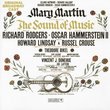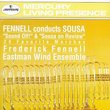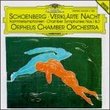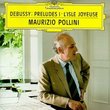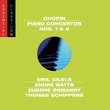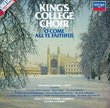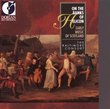Available,,, for a Huge Price!
Giordano Bruno | Wherever I am, I am. | 04/03/2008
(5 out of 5 stars)
"Middle English poems were mostly written to be sung or at least chanted with instrumental back-up, in the manner of the troubadours. However, fewer than two dozen poems in an English dialect rather thah in Norman French have survived with musical sources. Sequentia has chosen nine of them to perform on this CD, and the results are extremely pleasing to the ear and intuitively authentic. Nobody approaches Benjamin Bagby in scholarship concerning the earliest repertoires of European music, and fortunately for us Bagby is a superb musician with a compelling bariton voice well suited for such songs. Can anybody declare with adamant certainty that what Sequentia performs is close to what an English listener heard in 1200? Of course not, but Sequentia offers a plausible combination of sound scholarship and musical talent.
The language sung on this CD is recognizably English, but you won't easily grasp the meaning without looking at the texts, with trnsaltions into modern English, German, and French. I urge you to read the poems first in modern English, then in Middle English, and THEN listen to Sequentia's performance of them, one at a time. After you "know" them a bit, you can always load them on your iPod and take a springtime walk in the nearest oak woods. Two of the songs - Fuweles in the frith & Bryd one brere - are in fact about birdsongs on such a walk. Four songs are religious, and two others are laments over the world's futility. Three of the songs are duets in "close" harmony, among the earliest of harmonic music. Most of the others are accompanied by authentic instruments of the Middle Ages: small harps, fiddle (vielle), and on one track by a "symphonia," the prototype of the French vielle au roux and the Swedish nyckelharpa, instruments that produce a constant drone pitch while allowing melodic playing with a small keyboard. Margriet Tindemanns is perhaps the very best "fiddler" since the War of the Roses, and shows her virtuosity on four instrumental tracks, including one that sounds amazingly like a Swedish folkdance. Bagby is the harper, and he too gets to show what dazzling music can be made with lap-sized harp.
Even if the price for this rare CD is prohibitive, I hope you'll become acquainted with Sequentia's other performances on CD and DVD. If you're ever walking in my neighborhood and see graffiti declaring Sequentia Rules, you'll know who wrote it."
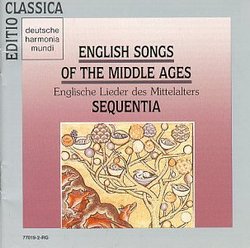

 Track Listings (13) - Disc #1
Track Listings (13) - Disc #1
